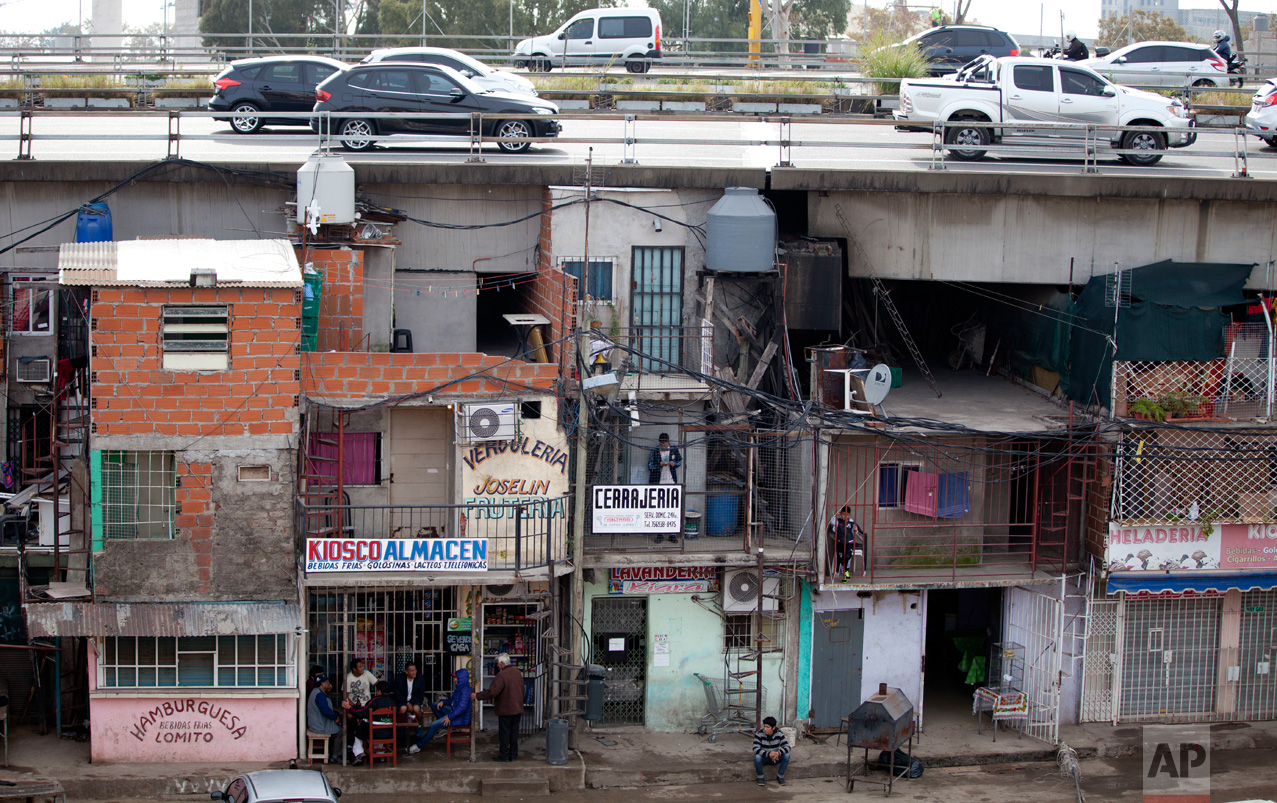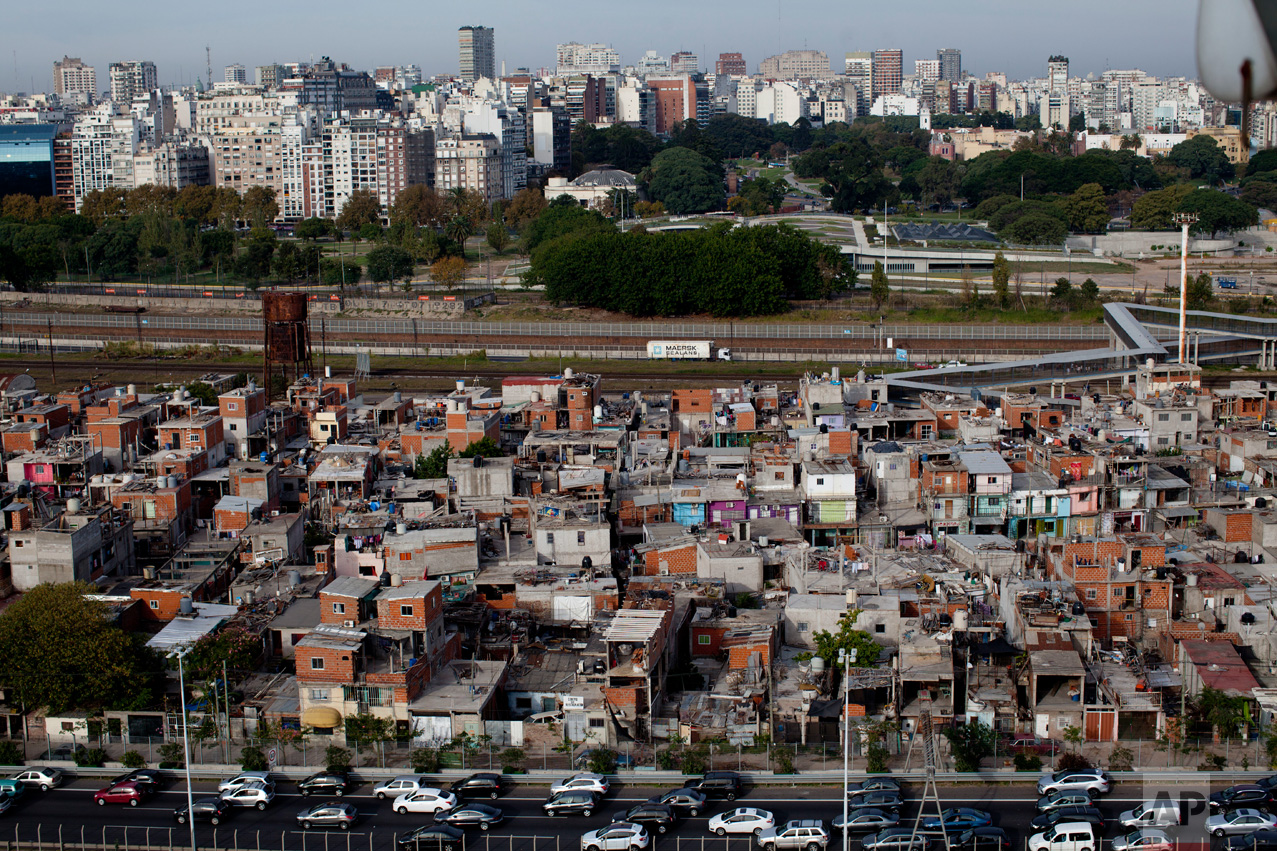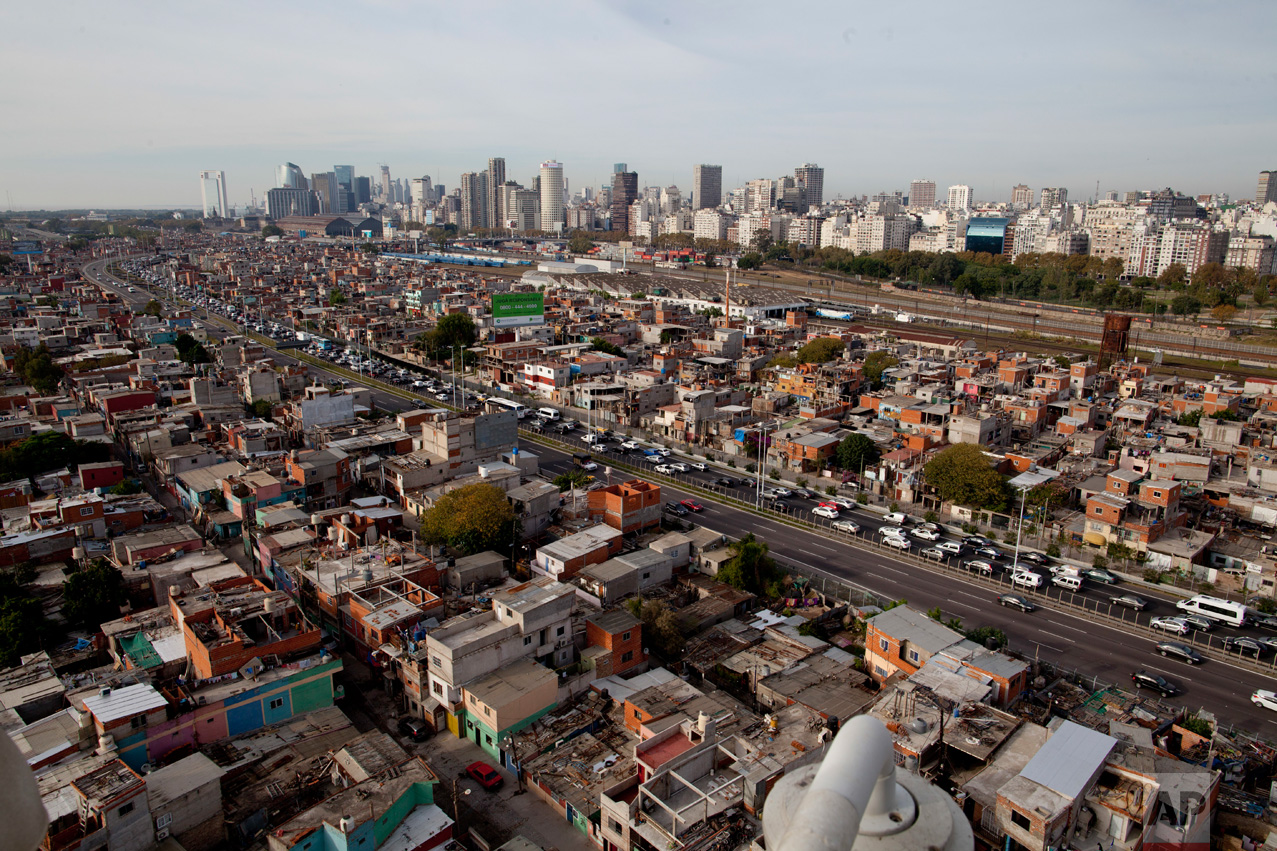Argentine capital seeks to improve iconic Villa 31 slum

Miguel Molina lives in a windowless brick shack in the heart of Buenos Aires’ iconic Villa 31 shantytown, just blocks from the high fashion stores and luxury hotels of one of the wealthiest areas of Argentina’s capital.
His family of four shares two old mattresses and water leaks through the zinc roof when it rains. The dirt floor is covered by a dusty carpet. Clothing and other belongings pile up in the corners. After two decades living like this, Molina hopes things are about to get better.
The Buenos Aires government is trying to better integrate Villa 31 into the fabric of the city by offering its 40,000 residents improved homes, credit to buy land, sewage, running water, and a connection to the power grid by 2020. There are also plans to open a bank branch, schools and even a McDonald’s restaurant in Villa 31.
“Some people really need this. Especially the children,” Molina said, adding that his children used to get ill from the humidity in his leaky house.
But while residents like Molina see hope, others view the project with distrust, complaining of the slow pace of work and remembering previous heavy-handed attempts to deal with the slums known as villas during Argentina’s 1976-1983 dictatorship.
At least 30 percent of residents say they don’t know what will happen to them once property ownership is regularized, said Agustina Marquez of the structural change and social inequality program at Buenos Aires University’s Gino Germani Research Institute.
“We interviewed several neighbors of the villa and there’s fear and bitterness because over the years there have been many announcements about this so-called urban integration of the city,” Marquez said.
An estimated 275,000 people live in the roughly 50 informal housing settlements in Buenos Aires, which have spread chaotically with little planning or regulation. The improvised homes often lack basic public services and are scattered along labyrinths of mostly unpaved streets with tangled power cables.
Villa 31 is considered the oldest, dating back to the 1930s, and one of the best-known because of its central location near the business district and the elegant French-inspired buildings of the Recoleta neighborhood.
Other villas sprang up when people from the provinces migrated to Argentina’s capital in search of jobs in the 1950s during a period of industrialization. The villas were later populated by immigrants from poorer neighboring countries like Bolivia, Paraguay and Peru.
Buenos Aires Mayor Horacio Rodriguez Larreta hopes to more fully incorporate all the informal settlements into the capital by 2023. The $320 million plan for Villa 31, which is being financed by the World Bank and the Inter-American Development Bank, also seeks to resettle families living beneath an elevated highway into 1,350 new homes.
City officials deal with daily complaints from residents frustrated because the work, which began last July, is not moving as fast as they would like. Others worry that they’ll be forced out of their current homes or that they won’t be compensated.
“If they’re talking about moving us to a better place, why can’t they build the houses and show them to us first?” said Jonathan Vasquez, a Peruvian who lives in a shack underneath an elevated highway at Villa 31.
Some remember when the military junta destroyed homes and forced many families to the outskirts of Buenos Aires in an effort to get rid of the squalid “misery villages.” The tactics were sometimes brutal and the problem was merely moved outside the city limits, where new shantytowns were formed and existing ones spread.
The government says about 30 percent of Argentines live in poverty, unable to afford a basic basket of goods. Many of the poor live in the villas.
Only 27 percent of the youths at Villa 31′s have a high school degree compared to 80 percent in the rest of Buenos Aires, said Diego Fernandez, the city’s secretary for social and urban integration.
“About 52 percent of the neighborhood lacks a sewage system or running water,” Fernandez said.
The city government plans to open three schools and move the headquarters of the education ministry to Villa 31. It has renovated about 80 houses on a street where workers are installing floors and running water pipes.
“The Inter-American Bank also plans to move its main office outside Washington D.C. to Buenos Aires and specifically to Villa 31 because it believes that can help as a bridge into the future,” bank President Luis Alberto Moreno said during a recent visit to the shantytown.
City officials are also in talks with the residents of the opulent Recoleta neighborhood bordering the villa to calm their fears about expanded street access to their neighbors, saying that drug hubs in the slum have been dismantled.
“Our job is to hear both sides and work to crumble fears based on prejudices,” Fernandez said.
Tania Villanueva, a 33-year-old resident who works at a laundromat, said she wants to pay for utilities just like the residents of wealthy neighborhoods because utility bills are a requirement for getting a bank loan. The roughly 900 business in the villa will also be paying taxes.
Some residents worry the project might shoot up the cost of living and real estate prices, forcing them out, but officials say they will fight speculation.
“It seems like this government is serious about this plan because the works are advancing,” Molina said. “This means a good future for the children.”
Text from the AP news story, Argentine capital seeks to improve iconic Villa 31 slum, by Almudena Calatrava.
Photos by Natacha Pisarenko
Natacha Pisarenko on Instagram
Follow AP photographers on Twitter
Written content on this site is not created by the editorial department of AP, unless otherwise noted.





















